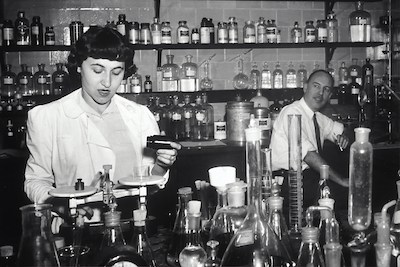 A previous article described how a scrum team could measure the value delivered by completed product backlog items. The approach is based on creating a product hypothesis for each item, describing how the value will be measured. By implementing an item (user story) and then measuring the results, the team is conducting an experiment to validate their beliefs about the value of the item.
A previous article described how a scrum team could measure the value delivered by completed product backlog items. The approach is based on creating a product hypothesis for each item, describing how the value will be measured. By implementing an item (user story) and then measuring the results, the team is conducting an experiment to validate their beliefs about the value of the item.
A minimal viable product (MVP) allows us to implement less than the full feature, and still gather data about how valuable users find it. While an MVP is often used to test an entire product idea, the approach can also be used to test new feature areas of an existing product. An MVP is a simple implementation that allows us to gather real data from our users. Read the full article…



 A
A 

 Writing first is a facilitation technique where participants collect their thoughts in writing before having a discussion. This allows more participation from those that need time to gather their thoughts or feel more comfortable expressing themselves in writing. The facilitator will set a time period for silent writing, then participants share their thoughts once the writing time is up.
Writing first is a facilitation technique where participants collect their thoughts in writing before having a discussion. This allows more participation from those that need time to gather their thoughts or feel more comfortable expressing themselves in writing. The facilitator will set a time period for silent writing, then participants share their thoughts once the writing time is up. Stacking is a facilitation technique which ensures that everyone’s voice is heard. The facilitator acknowledges each person who wants to contribute and establishes an order in which they will share. The result is that each person knows when their turn is and that they won’t be forgotten.
Stacking is a facilitation technique which ensures that everyone’s voice is heard. The facilitator acknowledges each person who wants to contribute and establishes an order in which they will share. The result is that each person knows when their turn is and that they won’t be forgotten. In this third part of our facilitation techniques series, we’re using questions for elaboration to encourage further conversation.
In this third part of our facilitation techniques series, we’re using questions for elaboration to encourage further conversation. In part two of our facilitation techniques series, we’ll practice mirroring: what it is and when to use it for effective facilitation.
In part two of our facilitation techniques series, we’ll practice mirroring: what it is and when to use it for effective facilitation. This morning I woke to the sad news that Steve Bockman passed away. Steve was a friend, co-worker, creator, problem solver, agilist, and one of my heroes. Steve worked at Agile Learning Labs from 2009 – 2012. In his Hawaiian shirts, his presence was always fun, friendly, and engaging.
This morning I woke to the sad news that Steve Bockman passed away. Steve was a friend, co-worker, creator, problem solver, agilist, and one of my heroes. Steve worked at Agile Learning Labs from 2009 – 2012. In his Hawaiian shirts, his presence was always fun, friendly, and engaging.